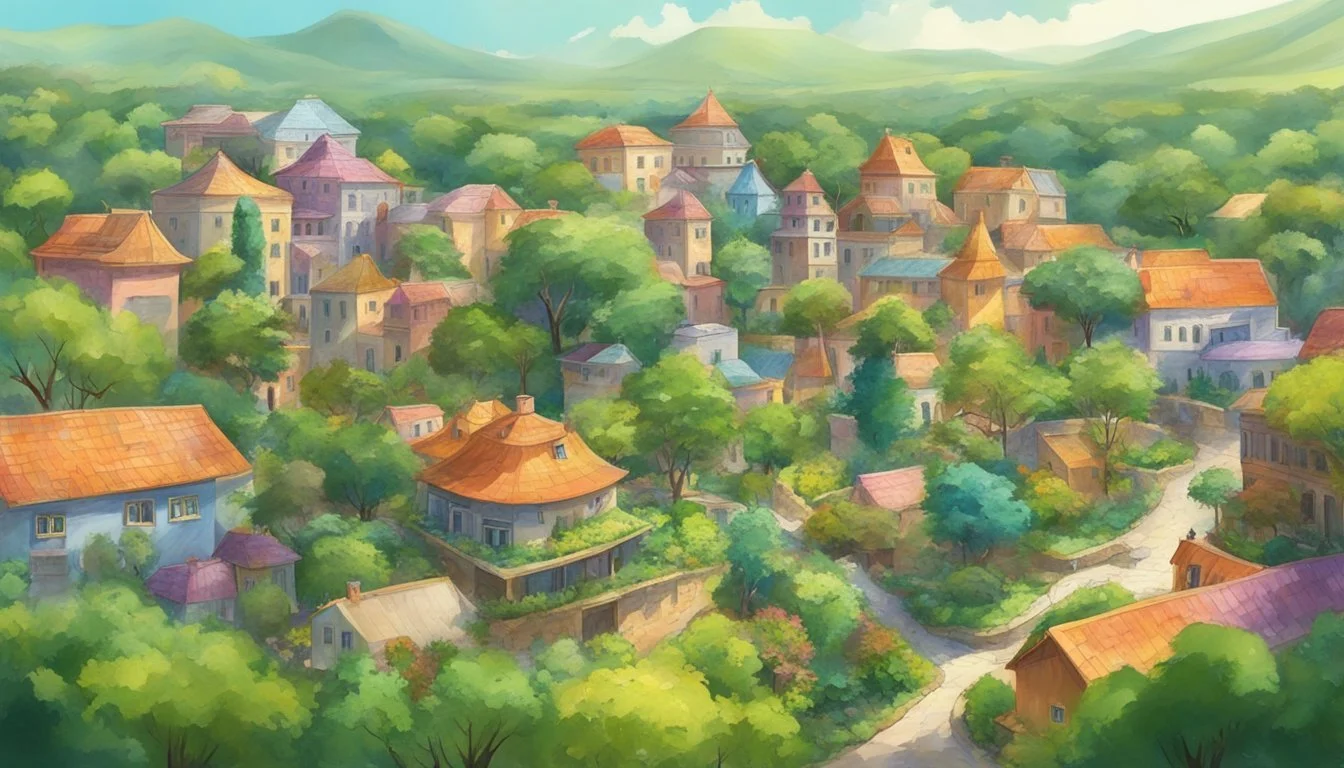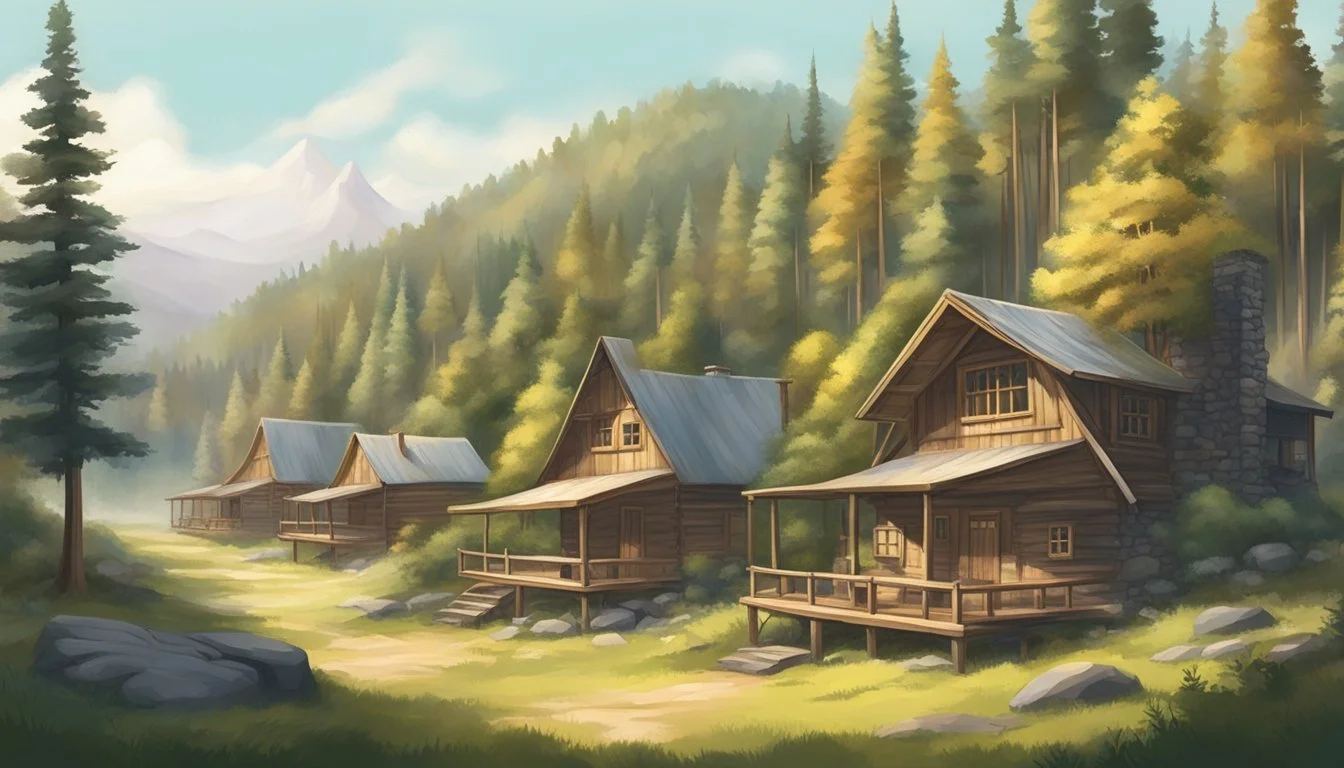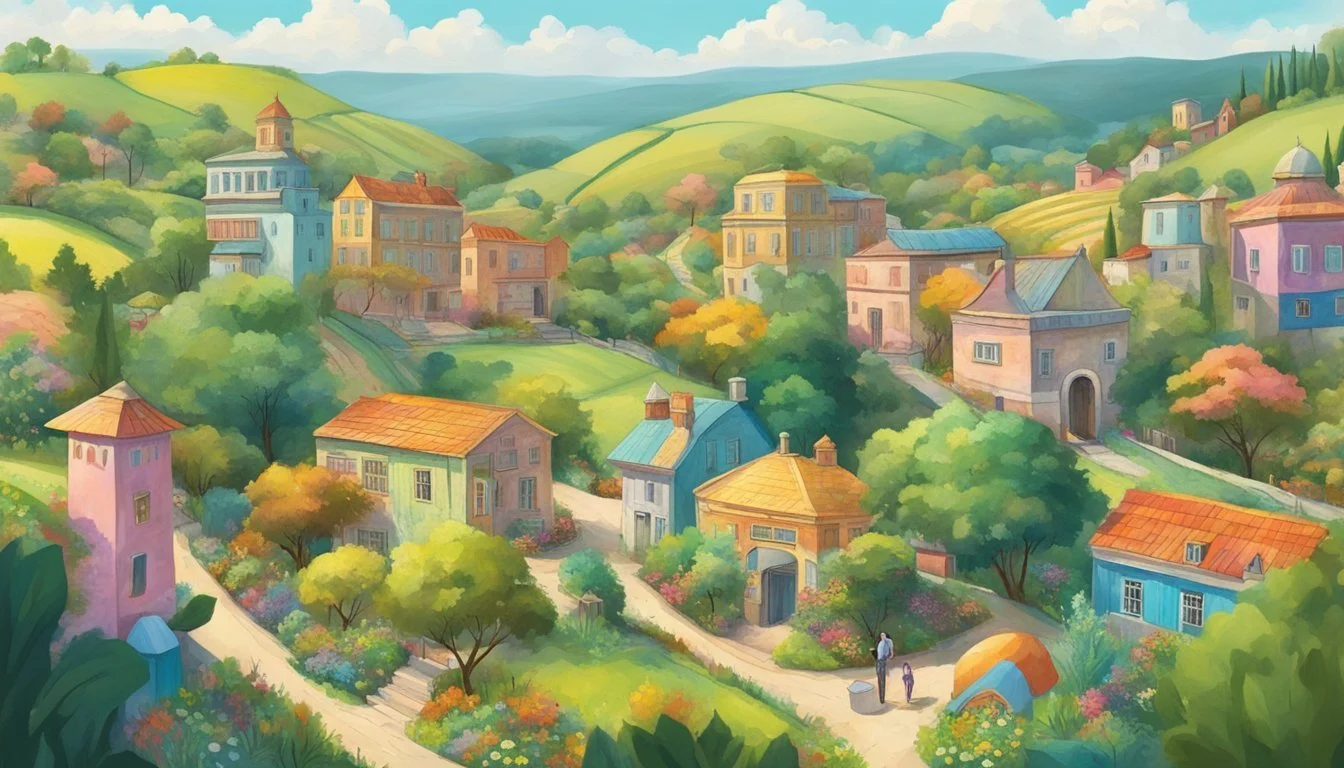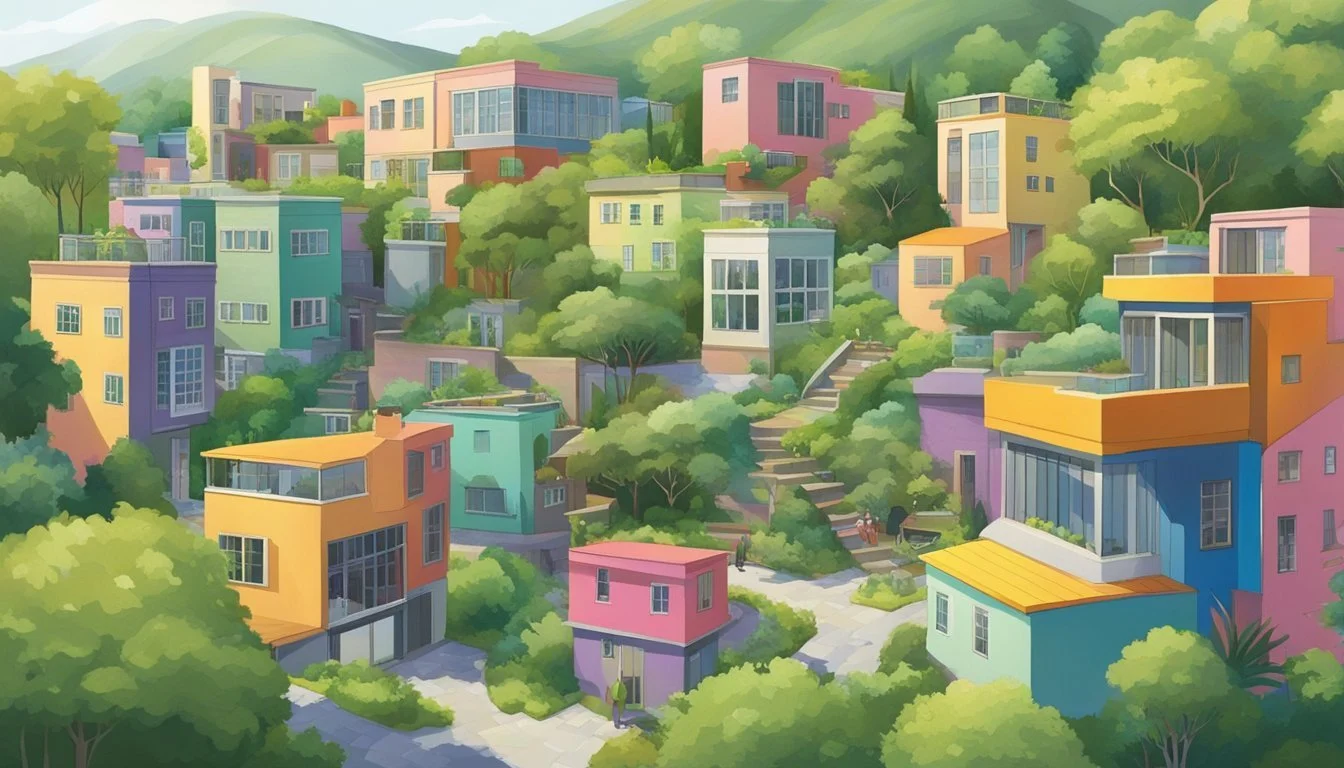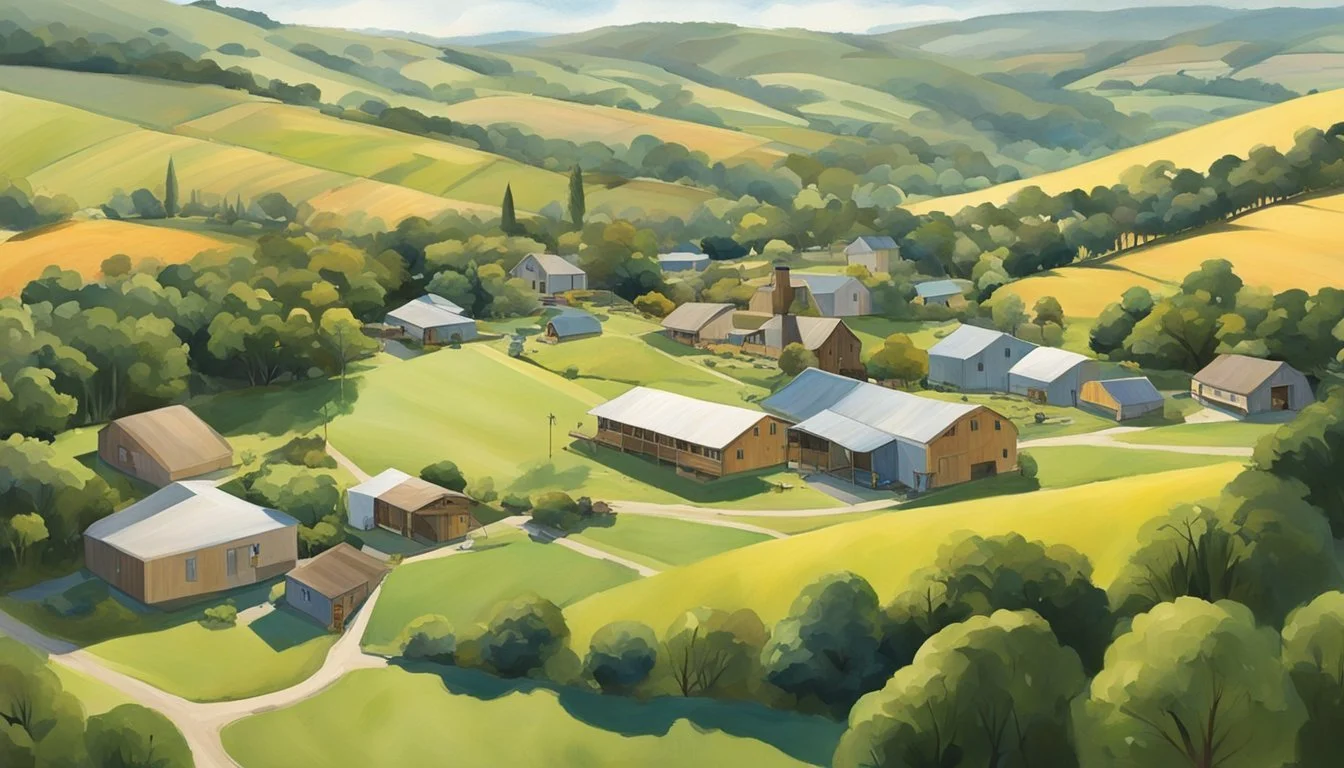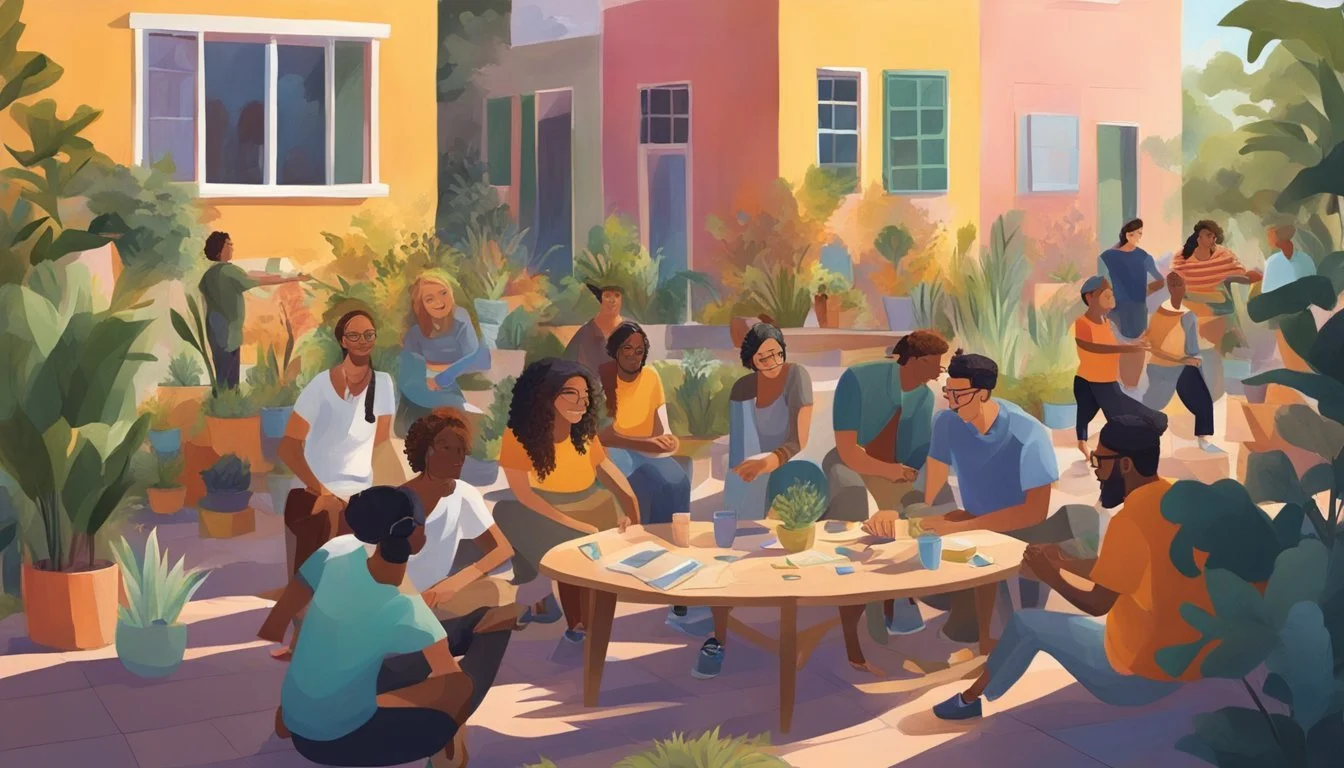Free Land for Artists’ Colonies
Fostering Creative Communities
Imagine a place where artists can live, work, and collaborate, all while enjoying the unique opportunity of free land. These artists' colonies provide not only physical space but also a supportive community that fosters creativity and collaboration. Communities offering free land to artists have the potential to transform creative visions into reality by removing financial barriers and providing spaces purpose-built for artistic exploration.
Artist colonies serve as havens where artists of all mediums can immerse themselves in their work without the daily interruptions typical of modern life. These communities create environments where creative minds can meet, share ideas, and inspire one another. From residencies to retreats, these colonies offer time and space for artists to develop new projects, often leading to groundbreaking work and innovative collaborations.
The appeal of these creative communities lies in the combination of autonomy and collective energy. Spaces provided for artists encourage risk-taking and creative experimentation, essential components in the journey of artistic growth. With the grant of free land, artists are given a rare and valuable chance to push the boundaries of their creativity, engage deeply with their craft, and contribute meaningfully to a vibrant artistic ecosystem.
Historical Context of Artist Colonies
Artist colonies have played a significant role in the development of art by providing a conducive environment for creativity and collaboration. They gained popularity in the 19th century, with several prominent examples emerging in the United States, such as Byrdcliffe and Yaddo.
19th-Century Beginnings
The concept of the artist colony originated in Europe and later spread to the United States during the 19th century. These colonies arose as a reaction to industrialization and urbanization, offering artists a refuge from the rapid pace of city life.
Inspired by works like Thoreau's Walden, artists sought solace and inspiration in nature. Groups of like-minded individuals formed communities that emphasized creativity over commercialism. These colonies were pivotal in nurturing artistic movements, allowing artists to collaborate and innovate in a supportive environment.
Prominent Artist Colonies in the United States
In the U.S., several artist colonies became famous for their contributions to art and culture. Byrdcliffe, founded in 1902 in Woodstock, New York, was one such haven. It fostered a community where arts and crafts thrived, offering workshops and a supportive environment for artists.
Yaddo, established in 1900 in Saratoga Springs, New York, also played a significant role. It provided residencies to artists and became a crucible for literary and artistic innovation. These colonies not only offered a place to live and work but also ignited transformative changes in various art forms.
Their legacies continue to influence the art world, demonstrating the enduring importance of communal artistic endeavors.
Establishing Free Land for Artists’ Colonies
Creating spaces for artists' colonies requires a thoughtful approach to both criteria for selection and examples of successful implementations. Locations like Rockland, Portland, and New York provide unique contexts and possibilities for free land initiatives.
Criteria and Selection Process
Identifying suitable land for artists' colonies involves several key criteria. Accessibility is paramount; the site should be easily reachable by road and public transportation. Proximity to urban centers like Portland or New York, which offer cultural and commercial resources, is an added advantage.
The selection process often involves applications from artists or groups. Review panels consider multiple factors such as artistic merit, potential for community engagement, and the feasibility of long-term residency programs. Some programs, like those in Rockland, may prioritize sustainability and environmental impact.
Financial backing and partnerships with local governments or private sponsors are crucial. These partnerships help provide the necessary infrastructure, like studio space, accommodation, and communal areas. Legal considerations, including zoning laws and land use regulations, must also be navigated carefully.
Examples of Artists' Colonies with Free Land
Several successful artist colonies have emerged by offering free land or residency programs. In New York, The MacDowell Colony has long provided artists with a communal environment to foster creativity. This model is often replicated in other regions.
In Rockland, the Skowhegan School of Painting and Sculpture serves as an exemplary model. It offers a summer residency program that includes living quarters and studio space at no cost to the artists. This initiative aims to cultivate a collaborative artistic community.
Portland's art scene also benefits from artist residencies that provide free land or reduced living costs, particularly in its vibrant downtown area. Such programs help sustain artist communities, allowing for cultural and creative growth without the prohibitive costs of city living.
These examples illustrate how thoughtfully designed criteria and processes can lead to thriving artist colonies that contribute significantly to cultural landscapes.
Artists' Residencies and Programs
Artists' residencies and programs provide crucial support for creatives, offering space, resources, and time to focus on their work. These establishments benefit both the artists and the communities they engage with.
Types of Residencies
Residencies come in various forms, each catering to specific needs. Traditional residencies provide dedicated studio space and accommodations for extended periods, often in inspiring locations. Project-based residencies focus on completion of specific works within a set timeframe. Virtual residencies, emerging with technology, allow remote participation without geographical constraints. Research residencies equip artists with access to libraries, archives, and other scholarly resources, fostering an environment of discovery.
Programs Supporting Different Art Forms
Residencies support diverse art forms, each with tailored facilities and resources. Writers benefit from Writers-in-Residence programs, providing quiet spaces conducive to writing. Musicians might join residencies offering access to recording studios and rehearsal spaces. Visual artists find studios equipped for painting, sculpting, and multimedia projects. Programs also extend to theater and opera artists, who get spaces for rehearsals and development of new performances. Organizations like the NEA fund these diverse residencies, ensuring broad support across art disciplines.
Impact on Local and Global Art Communities
Residencies significantly impact both local and global art scenes. Locally, they rejuvenate communities by bringing in diverse talents and facilitating cultural exchange. Artists often hold workshops, exhibitions, or performances that engage and enrich local culture. Globally, they foster connections and collaborations among international artists. Programs such as artists-in-residence initiatives contribute to a global network, enhancing cultural dialogues and promoting cross-border artistic endeavors. This interconnectedness helps in the propagation of innovative ideas and the global appreciation of diverse creative expressions.
Financial Aspects of Artists' Colonies
Artists' colonies offer financial assistance through fellowships and stipends, and they also outline costs and fees, including housing and materials. Understanding these aspects is essential for managing finances effectively.
Fellowships and Stipends
Many artists' colonies provide fellowships and stipends to support residents. These financial aids can cover costs such as housing, materials, and sometimes even travel. Fellowships are often merit-based and awarded to artists who show exceptional promise.
Stipends vary widely in amount and purpose. Some offer a modest sum to cover daily expenses, while others might be more generous, allowing for a broader range of creative activities.
A list of typical financial aids:
Housing and utility coverage
Materials and supply reimbursement
Travel expenses
Daily living stipends
Research and apply early to increase the chances of receiving these grants.
Managing Costs and Fees
Artists' colonies often charge fees for participation, which can vary depending on the resources available and the duration of the residency. These fees might include:
Application fees: Usually non-refundable and required upfront.
Program fees: Covering the cost of the residency itself, which can range from a few hundred to several thousand dollars.
Material costs: Artists might need to budget for their own supplies unless otherwise specified.
Housing is frequently provided, though the quality and amenities can differ. Some colonies offer private accommodations, while others might consist of shared spaces.
It is crucial to calculate all potential costs beforehand to ensure financial feasibility. Additionally, some colonies offer sliding scale fees or work exchange programs to help artists manage expenses.
Facilities and Amenities
Artists' colonies provide a nurturing environment with essential facilities that cater to both creative and daily living needs. High-quality studio spaces, equipment, and comfortable living accommodations are crucial to fostering a supportive community for artists.
Studio Space and Equipment
Artists' colonies often feature spacious studios designed to accommodate various forms of artistic expression. These studios may include:
Natural light sources such as skylights and large windows to create an optimal working environment.
Ventilation systems to ensure safety when working with materials like paints and solvents.
Regarding equipment, artists can expect:
Easels, drawing tables, and desks tailored to different art forms.
Specialized tools such as pottery wheels, kilns, and sculpting tools.
Technology stations equipped with computers, graphic design software, and printers for digital artists.
Living Accommodations and Resources
Comfortable living accommodations are vital for artists to thrive. These usually include:
Private or shared living spaces with bedrooms, bathrooms, and common areas.
Meals provided in communal dining areas to promote social interaction.
Additional resources might encompass:
Libraries stocked with art books and journals.
Galleries for exhibiting artists' work to the public.
Wellness facilities offering exercise rooms or meditation spaces to support mental and physical health.
These amenities ensure artists can focus on their work without the stress of daily living concerns, fostering a productive and creative atmosphere.
Educational Opportunities and Community Outreach
Educational opportunities and community outreach play crucial roles in fostering creative expression and engagement. These efforts ensure that the benefits of artistic colonies extend beyond the resident artists to the wider community, enriching both students and the public through targeted programs.
Workshops and Classes for Students
Artists' colonies often offer workshops and classes designed to make arts education accessible to students of all backgrounds. These sessions can include fine arts, digital media, and performance arts, some facilitated through specialized spaces like a media lab.
Programs such as the ones held by organizations like Arts+ provide students with opportunities to receive free or reduced-rate arts education. These initiatives create an inclusive environment where youth can explore their creativity, gain new skills, and foster an appreciation for the arts. High-quality instruction and hands-on activities help nurture young talents and build a robust foundation for future artistic endeavors.
Community Events and Public Engagement
Public engagement is achieved through a variety of community events. Screening of films on social topics, such as those organized by Chicago's CeaseFire program, are powerful tools in raising awareness and sparking dialogue. These events often include discussions, making them interactive experiences that connect individuals on important societal issues.
Artist communities also host exhibitions, open studios, and performances allowing the public to engage directly with the creative process. These activities not only showcase the artists' work but also provide educational experiences for attendees, highlighting the value of the arts in fostering community cohesion and cultural dialogue.
By integrating these initiatives, artist communities ensure that their impact extends far beyond their immediate vicinity, fostering a vibrant, informed, and connected public.
Collaboration and Networking
Collaboration and networking are foundational to the success of artists' colonies. By fostering social interaction and forming partnerships with local artists and businesses, these communities can thrive and innovate.
The Role of Social Interaction and Exchange
Social interaction is a cornerstone of collaborative artistic endeavors. Artists benefit from exchanging ideas, feedback, and resources. Informal gatherings like critique groups or discussion forums can catalyze creativity and professional growth.
Interactive workshops and group projects further enhance this collaborative spirit. These activities allow artists to learn from one another and create more meaningful work. Such exchanges are not only vital for artistic development but also for personal and professional relationships within the community.
Working with Local Artists and Businesses
Partnerships with local artists and businesses can significantly enrich an artist colony. Local collaborations provide unique opportunities for cross-disciplinary projects and community engagement. Businesses gain access to creative solutions and goodwill by integrating local art into their environments.
These collaborations can range from joint exhibitions to community art installations, which become shared projects that reflect both the artists' vision and the business’s branding. This mutual benefit helps establish a sustainable ecosystem where creativity and commerce coexist and support each other.
Accessibility and Inclusivity
Free land for artists’ colonies has the potential to foster inclusive and accessible creative communities. These initiatives need to ensure diverse artists can participate and address any barriers they may face.
Creating Spaces for Diverse Artists
Designing artist colonies that welcome diverse perspectives enriches the community. Ensuring physical accessibility is fundamental. This includes wheelchairs ramps, tactile paving, and accessible restrooms.
Beyond physical modifications, it’s essential to promote cultural inclusivity. Providing spaces where artists can express their heritage and creativity improves engagement. Offering workshops, support networks, and translation services encourages participation from varied backgrounds.
Establishing partnerships with organizations focused on underrepresented groups can help. Collaborating with disability advocacy groups or cultural organizations supports a truly inclusive environment.
Addressing Barriers to Participation
Identifying and mitigating barriers is crucial. Financial constraints often prevent talented artists from joining such colonies. Offering scholarships or grants can be a solution. Providing affordable housing and studio spaces also helps.
Transportation can be another significant barrier. Establishing accessible transit options or providing shuttle services can facilitate participation.
Digital inclusion is another aspect. High-quality internet and digital tools ensure all artists, including those with disabilities, can fully participate. Implementing these measures helps break down technological barriers.
Actively promoting these opportunities through diverse media channels ensures artists from various communities are aware and can engage fully. Regular feedback sessions with participating artists can provide insights into new barriers and ways to address them effectively.
Cultural Impact and Legacy
Artists' colonies not only inspire creativity but also leave a profound cultural and economic impact on their host communities. These colonies also adapt and thrive in contemporary society, reflecting the changing dynamics of the modern world.
Influence on Local Culture and Economy
Artists' colonies often become cultural hubs that rejuvenate local traditions and introduce new artistic influences. By attracting diverse groups of artists, these colonies foster a vibrant cultural landscape that benefits local residents.
The presence of artists and creative professionals can drive economic growth as well. Art festivals, gallery openings, and workshops attract tourists and cultural enthusiasts, boosting local businesses like restaurants, hotels, and shops.
Furthermore, these colonies can turn struggling rural areas into thriving cultural destinations, creating jobs and encouraging investments in infrastructure and services.
Artists' Colonies in Contemporary Society
In modern times, artists' colonies continue to evolve, embracing technology and new forms of expression.
Digital platforms and social media enable artists to share their work globally, attracting a wider audience and potential patrons. Contemporary colonies often blend traditional arts with digital media, reflecting the innovative spirit of current artistic trends.
These communities also serve as sanctuaries for collaborative and interdisciplinary projects, fostering a sense of shared purpose and solidarity among artists. This ensures their relevance and adaptability in today's fast-changing cultural landscape. Consequently, artists' colonies remain influential in shaping artistic movements and societal values.

